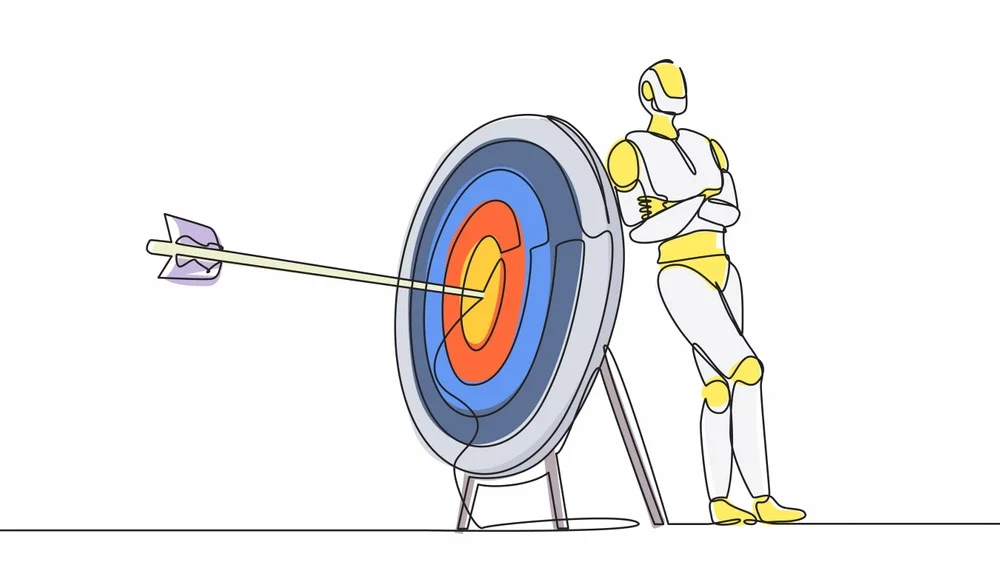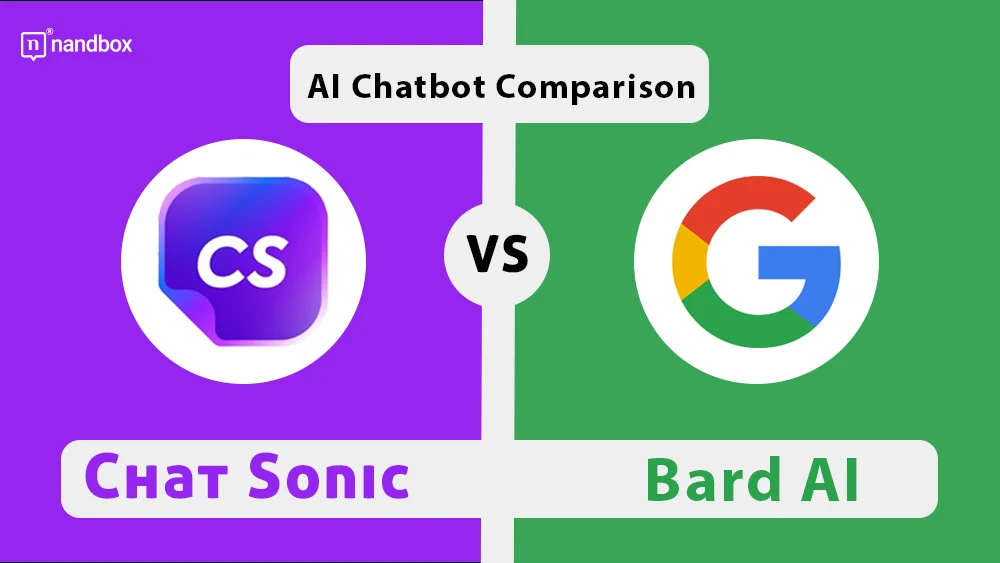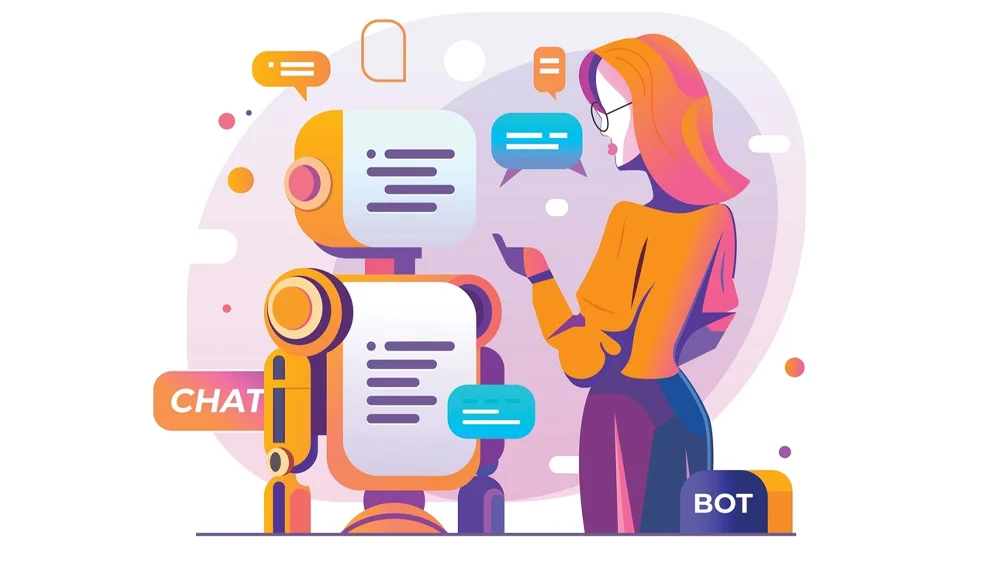Chat Sonic vs. Google Bard: An AI Chatbot Comparison
In this tech-themed generation we’re currently living in, a lot of new chatbot solution innovations are coming to the spotlight. That is why we’re trying to shine a light on each and everyone of them. That is, in order to understand the specs and features of each of them. In today’s comparison, we’ll be discussing another two giants: In Chat Sonic vs. Google’s Bard, we merely scratch the surface of the vast landscape shaped by artificial intelligence (AI). For a deeper insight into the transformative power of AI and its impact on the future, you probably should explore more about it. Different resources, like an essay on artificial intelligence, can emphasize the importance of actively learning about the profound changes AI brings to our world and show the significant role AI plays in shaping our future.
Because Google Bard AI is still kind of a secret, not a lot of information about what it does is readily available online. It really feels a bit like there’s no comparison to Chat Sonic, a free app. Bard is still off the hook until you receive an email saying that you can sign up for it. You can sign up for Chat Sonic right away.
Having said that, Bard’s Chat Sonic AI has a number of unfinished or missing features. Therefore, it’s crucial to consider them while deciding whether it would be better to wait for a Google Bard AI invitation rather than just start using Chat Sonic.
The Availability in Chat Sonic vs. Bard: A Huge Factor of Success That We’re Focusing On
The biggest difference between Chat Sonic vs. Google Bard AI is availability. As previously established, Bard AI is only accessible through a restricted, invite-only “experiment.” On Chatsonic’s website, anyone can register and use the program right away.
You must join their waitlist and patiently wait for your invite if you want to use Google’s Bard AI. This is the only way to use Google Bard AI until it is available to the general public.
It would naturally be difficult for Google Bard AI to win this competition due to its lack of availability. Google will eventually make Bard accessible to everyone or even a paid service that you may sign up for. Google Bard AI, though, might not be it, and today might not be the right time.
Chat Sonic vs. Bard: Conversation-Wise? Let’s See Which Wins the Competition Today
Bard may not be “that” available for people like Chat Sonic but when we experienced it, we found out that it is extremely wordy and chatty. Some may find it a problem, as they wish to have a brief sentence to cut it short. Personally, I don’t mind a chatty bot.
When comparing both, it is safe to say that Google’s Bard is more than satisfying when it comes to creativity. It’s human intelligence level is of extreme awesomeness and it replies with very creative suggestions for your inquiries. The problem with Bard is, again, the availability. It’s like a little baby that Google is hiding from the world’s vicious reality. Too dark? I’m just kidding.
Let’s discuss a little bit about Chat Sonic now. I used the word little here deliberately because, when it comes to comparing the conversational level of both Bard and Chat Sonic, there is too little to be said about Chat Sonic. Chatsonic seems to only understand the fact that it is an AI model and not a real person. For some people, it’s sole purpose is to help them understand that it is in fact an AI chatbot. This kinda seems like it’s saying, “I can’t really help you, I am not human, duh!”
Looking at it from a different perspective, it isn’t quite a drawback, except that practically every prompt is met with a warning that it is not a human and cannot perform the task you ask of it. Even when someone expressed their candid dissatisfaction with it, it responded by assuring them that it was AGAIN an AI language model.
Code of Ethics: An Essential AI Factor to Have and Let People Know About
In practice, having a chat with Chatsonic does not feel at all like having an actual “chat”. It seems like a difficult puzzle game where you have to figure out what will make Chatsonic angry and how it will react to certain things. Chatsonic will not react to anything that breaches its pre-programmed “code of ethics,” which considers a large number of messages to be “unethical.” This screams paranoia from the design team of this bot, to be honest, which is something that I don’t think is very practical.
When a user asked the AI whether or not it liked Call of Duty, for instance, the user received a warning. The team behind Chatsonic again appears to worry a lot. Regarding the possibility that someone could exploit Chatsonic in a certain way.
The outcome of this competition is crystal clear, and the victor is Google’s Bard AI. Unusually for the current AI Chatbot detector, I get the impression that I could actually form a pack bond with Google Bard AI. Experiments with modern chatbots have stoked a genuine dread of individuals abusing artificial intelligence. This leads to developers building their Chatbots with rigorous ethics, which might result in conversational abilities that are stilted and lack feeling or professionalism.
Chat Sonic vs. Bard: What About the Accuracy of Information?

Here’s a comparison based on a certain user’s and critic’s experience. When the user initially started using Chatsonic, They were particularly impressed by its ability to produce citations for the sources it used. Nonetheless, this excitement was short-lived since Chatsonic continued to provide them with material that was obviously fake as well as sources that were too outdated to provide reliable information.
For example, Chatsonic persists in claiming that Call of Duty: Modern Warfare II will be launched in 2022, despite the fact that it is now 2023 and that the game has already been made available to the public. In addition, when the user attempted to modify Chatsonic, the program responded by providing them with rewritten paragraphs that contained information that was much more inaccurate. Disappointing, I know.
Bard also informed them that Call of Duty: Modern Warfare II was not yet available for purchase at the time of our conversation. However, here’s why I’m rooting for Bard. It actually acknowledged the error and accepted the change after it was pointed out to him. It is irrelevant whether or not Bard rewrote its communications to account for the correction because it is neither here nor there.
On the other hand, the day after the user fixed Bard, they gave it the identical prompt, and the new message was completely accurate. It seems that Bard is taking into consideration the training that they have received when communicating with me, which is a very satisfying sensation.
How Easy Is It to Train Both Chatbots: A (Not So Much) Million Dollar Question
Now, the most important thing to keep in mind about artificial intelligence such as Chatsonic and Bard is the following. The person using them doesn’t really intend to be the trainer of these AIs. These artificial intelligence systems are built with the intention that their chatbot solution operators will instruct them. They’re made so that the general public will use them in whatever state their operators leave them in. Some people who love training them, though, are going to want to put in the work necessary to train the AIs. So it is important to take note of whether or not you can actively train the AIs.
The user is unable to train Chatsonic in any meaningful sense at all. A certain app user had no success in getting it to spit out the right time frame for the release for Call of Duty: Modern Warfare II. After knowing what was correct, the bot gave out a version of its initial remark that was much less accurate than before.
This is particularly aggravating because most users have the distinct impression that they are capable of instructing the AI. That is to be more accurate and conversational if they have that opportunity.
It is just not in the developers’ interest to delegate such a level of control to individual users, and unfortunately, we have no choice but to respect their decision in this matter.
Bard, on the other hand, is a chatbot that you can train with very little effort. The artificial intelligence is very responsive to the input provided by the users. A straightforward alteration resulted in a dramatic shift in the manner. Bard is also responsive to input concerning its general behavior, such as urging it to please compose shorter messages in order to be a little bit more conversational.
Chat Sonic vs. Bard: Which One Should You Choose? I Think the Answer Is Clear Enough
I apologize if you feel that I am a bit biased when it comes to the answer. But seriously, who wouldn’t choose the bot that replies faster, better, and more accurately? It even admits it when it makes a mistake? I would like to be completely honest with you, dear reader. If the developing team behind Chat Sonic improves the chatbot’s quality in human-like responses and accuracy. I promise you to rewrite this comparison to include all the new improvements they add, if there are any. Additionally, if you add live chat to your website, it can significantly enhance customer interaction and satisfaction.
However, in most cases, website owners and academia don’t allow AI content. If you are also facing restrictions on using AI-generated content, then you may think that even using BARD as AI writer won’t work. But let me provide you with a solution. After generating content through BARD, you can use a paraphrasing tool or sentence rewriting tool. That is to eliminate AI touch and humanize it. The advanced capabilities of this paraphrasing tool can polish the content, enhance its readability, and, most importantly, remove instances of plagiarism and AI.
Final Thoughts!
I believe that chatbots are incredibly unworthy of this worldwide hassle. That is from my personal point of view, of course. However, some are really beneficial, time-saving, and may even be very fun to use for some people. Are these new AI solutions a revolutionary innovation? The answer from where I’m sitting would be yes. They are taking the world in a new tech-spin and as dangerous as they might be or a bit unethical for some people, I see that they are mind-blowing to some people in the tech society.




